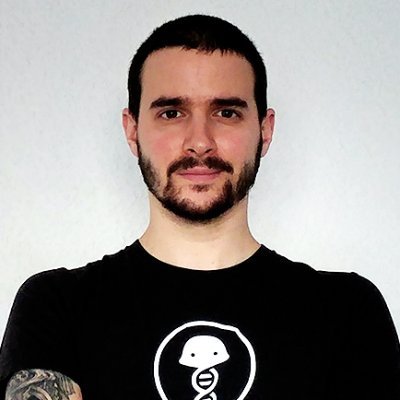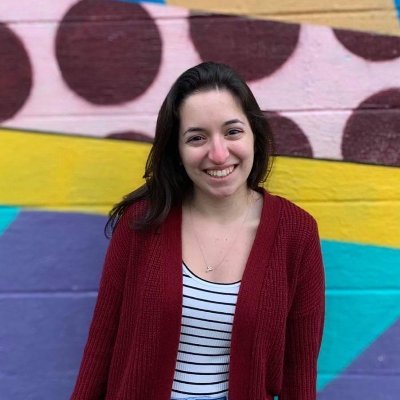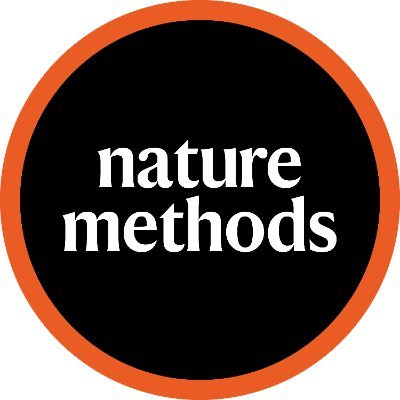
Olivier Belli
@olivier_belli
Followers
318
Following
1K
Media
6
Statuses
43
@olivier-belli.bsky.social PhD in Molecular Biology 🎓 Interested in gene editing and functional genomics.
Basel, Switzerland
Joined May 2018
🚨 Very happy to announce the publication of my PhD work @NatureBiotech where we combined base and prime editing screens to investigate the impact of genetic variants in cancer. 🧵⬇️ https://t.co/ZGHgpnxaQn
nature.com
Nature Biotechnology - Thousands of rare oncogene variants are evaluated using multimodal gene editing screens.
8
27
176
@randall_platt @olivier_belli @k_karava @ETH_en @ETH_BSSE @BRC_CH @UniBasel @NCCR_MSE Combining base and prime editing to decipher which gene variants lead to cancer #NBTintheNews via @GENbio
genengnews.com
Researchers at ETH Zurich combined two CRISPR-Cas methods to decipher how mutations in a cell’s genome affect its function. Their new approach can help determine which of the variants contribute to...
2
5
14
Thrilled to see our work out in @naturemethods today! We applied prime editing to multiplexed dropout screens and benchmarked the tool’s ability to induce phenotypes when installing premature stop codons in essential genes.
From @bsadamson and colleagues, a prime editing platform for high-throughput functional interrogation of up to tens of thousands of small genetic variants. https://t.co/VVT30kywD9
5
23
68
And read the News & Views from @fjsanchezrivera highlighting this work, along with related work published in @NatureBiotech from @randall_platt and colleagues, ( https://t.co/Khyc3gWZmW), here: https://t.co/VM18q87bDM
nature.com
Nature Methods - Massively parallel base and prime editing screens provide unparalleled interrogation of genetic variants with single-nucleotide resolution.
0
3
7
@randall_platt @olivier_belli @k_karava @ETH_en @ETH_BSSE @BRC_CH @UniBasel @NCCR_MSE Using CRISPR to decipher whether gene variants lead to cancer #NBTintheNews via @ETH_en
ethz.ch
Researchers at ETH Zurich have combined two gene editing methods. This enables them to quickly investigate the significance of many genetic mutations involved in the development and treatment of...
1
5
16
Researchers at ETH Zurich have combined two #GeneEditing methods. This enables them to quickly investigate the significance of many #GeneticMutations involved in the development and treatment of #Cancer.
ethz.ch
Researchers at ETH Zurich have combined two gene editing methods. This enables them to quickly investigate the significance of many genetic mutations involved in the development and treatment of...
0
6
14
One of the major challenges in human genomics is the functional assessment of variants. Base and prime #CRISPR genome editing is making a big difference for meeting that challenge, as exemplified in this new report @NatureBiotech
https://t.co/he8oGniSrM
@randall_platt
nature.com
Nature Biotechnology - Thousands of rare oncogene variants are evaluated using multimodal gene editing screens.
3
42
163
I am also very proud to share this authorship with my former master’s student @k_karava who began working with me on this project two years ago. Her sharp scientific reasoning, hard work and amazing team spirit made this work possible but also a truly enjoyable collaboration!
0
0
2
This marks the end of my PhD journey at @ETH @ETH_BSSE and I cannot finish without thanking my supervisor @randall_platt for his continuous support throughout this journey, as well as Rick Farouni for sharing his code magic with us and all reviewers for their insightful comments.
1
0
3
We believe that this work will facilitate the accurate interpretation of VUS in cancer patients and the optimization of treatment regimens. These complementary screening approaches could also be expanded to investigate the function of many more genes of interest in the future.
1
0
1
This new approach identified known and novel hits, including short insertions that could not be introduced by base editing. We also identified key parameters for prime editing screen design and demonstrated the use of synonymous edits to differentiate true and false positives.
1
0
1
While base editing scanning screens proved useful in identifying novel pathogenic mutations, they can only replicate 17% of known EGFR variants. We thus designed a prime editing library introducing almost 3000 patient-derived mutations and conducted a new EGFR activation screen.
1
0
2
Previous experiments were conducted in an EGFR WT cell line but drug resistance often emerges in patients due to secondary mutations. We thus repeated our screens in PC-9 cells harboring an hyperactive EGFR variant and identified both overlapping and context-dependent hits.
1
0
1
We then leveraged the same approach to identify variants impacting cell sensitivity to two clinically approved tyrosine kinase inhibitors. We found hits resistant to one or both molecules, suggesting that these data could be used to help prioritize drug treatments in the clinics.
1
0
1
After controlling for constructs impacting cell viability, we identified 19 hits that led to EGF-independent proliferation. 8 of these likely oncogenic variants were listed as VUS while 6 others were absent from databases, including unexpected C-terminal truncating mutations.
1
0
1
First, we delivered an sgRNA library tiling all EGFR exons along with a C-to-T or an A-to-G base editor to an EGFR WT cell line. We then selected for cells with constitutive EGFR activity by removing EGF from the culture medium before quantifying relative library distributions.
1
0
1
To address this, we used base and prime editing pooled screens to assess the pathogenicity and drug sensitivities of tens of thousands of variants in the Epithelial Growth Factor Receptor (EGFR), an oncogene frequently mutated in lung, brain and breast cancers.
1
0
1
Each human genome contains about 4 million variants, including 10,000 non-synonymous ones that can influence disease risk and treatment response. Yet, nearly half of the 3 million mutations listed in ClinVar are variants of uncertain significance (VUS) whose impact is unknown.
1
0
2









